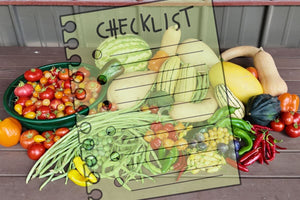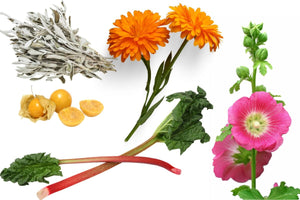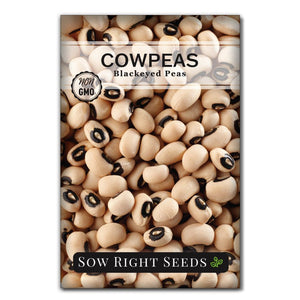From Seeds to Greens: How to Grow Zesty Mustard Greens from Seed
Mustard greens are one of the easiest leafy greens to grow from seed, and their spicy, peppery flavor makes them a standout in the garden. These fast-growing plants thrive in cool weather, making them perfect for both spring and fall gardens.

How to Grow Mustard Greens from Seed
Mustard greens are so easy to grow from seed. Direct sowing is recommended, which makes it even simpler to grow them from seed.
They grow especially well in cool weather, so we recommend planting mustard greens in your fall or spring garden. Temperatures between 45-75ºF are optimal.
For fall crops: Plant seeds 4-6 weeks before your first expected fall frost.
For spring crops: Sow seeds 4 weeks before the last expected frost date, or as soon as you can work the soil.
For extended harvests: If you have a long, cool growing season, try succession sowing. Plant more seeds every 3 weeks.
You can also start seeds indoors 4 to 6 weeks before transplanting.
In the summer, use a shade cloth to keep greens from bolting and going to seed. Keep plants well-watered, especially if grown as a summer crop. Applying a layer of mulch can help keep the ground cool and the soil moist.
In cooler months, use frost blankets as needed to protect from hard frost. Low- and high-tunnels can also help extend the harvest season.

Tips for fail-proof mustard greens seed germination
Start with moist, well-draining soil or seed-starting mix.
Sprinkle seeds on top and lightly cover with ¼ inch of soil.
Seeds germinate in 4 to 12 days in soil that is 45ºF and warmer.
Warmer temperatures (60-75°F) speed up germination indoors.
If starting seeds indoors, let the seedlings develop two sets of true leaves before hardening them off for transplanting.
Mustard Green Varieties to Try
Greenwave Mustard Greens (Brassica juncea) have spineless, highly frilled leaves that grow to a height of 2 feet. Harvest as a baby leaf or wait until it matures for a deliciously spicy mustard green. Greenwave's spicy flavor mellows when cooked. Cold hardy, but also resistant to bolting in hotter weather. 50 days to maturity.
Southern Giant Curled Mustard Greens are a curled leaf variety.
This classic green mustard grows up to 2 feet with large, bright green fringed, curly leaves tinged with yellow. It’s cold-hardy, but also resistant to bolting in hotter weather. Excellent served raw in salads or a great addition to soups, stir-fry, or your favorite Southern dishes. Spicy mustard flavor mellows when cooked.

Growing and Caring for Mustard Greens
Space mustard plants 8 to 12 inches apart. Most mustard greens can get as tall as 2 feet and spread 2 feet if you let the leaves grow that big. Those are some big leaves! However, you can start harvesting leaves when they are much smaller and have a milder flavor.
Since mustard greens can tolerate a light frost, they’re an excellent cool-weather crop. They’ll continue to grow throughout the winter if temperatures don’t drop below the 20s.
We plant mustard greens in our hoophouse so we can harvest them throughout the winter.
Sun
For the biggest leaves, grow mustard greens in full sun (8 hours). They will tolerate shade, but you’ll have slower growth and smaller leaves.
Soil
The best soil for mustard greens is a well-drained loam. Amend heavy soil with compost to improve drainage and add nutrients. A soil pH of 6.5 or higher is recommended. A soil pH above 6.8 can help control a fungal disease called clubroot.
Water
Keep soil consistently moist. Apply a layer of mulch to help prevent evaporation.
Fertilizing
We like to amend our soil with compost before planting. Then, a few weeks later, apply a balanced fertilizer. (10-10-10) After that, you can add fertilizer that is higher in nitrogen to promote leaf growth.

Pests and Diseases
Clubroot is a disease that can affect Mustard Greens. Maintaining a high soil pH (6.8 to 7) can help control the growth of this soil-borne disease. Rotating crops is also effective. Avoid planting mustard greens for 3 to 4 years where other brassicas have grown.
Common Pests
Watch for cabbage loopers, leaf miners, flea beetles, aphids, and slugs. Prevent infestations by using floating row covers to keep moths and other insects off the leaves. Since mustard greens don’t need pollination, this is a practical prevention method.
For organic pest control, use Bt (Bacillus thuringiensis) to target cabbage loopers without harming beneficial insects.

Harvesting Mustard Greens
Plan on harvesting mustard greens around 30 to 50 days after they sprout.
Harvest the whole plant or cut off individual leaves. You can gently twist off the leaves or use sharp scissors to cut.
Younger leaves are excellent for fresh salads. Larger leaves will have a stronger flavor and are primarily used in cooked dishes.
Harvest mustard greens in the morning when they are full of water. It’s best to pick and use them the same day, but they can be stored wrapped in plastic in the fridge for about a week.
Yellow flowers indicate that the mustard greens have gone to seed. The flavor will be more bitter, and you may want to consider pulling the whole plant out at this point. Or you can wait and harvest the seeds to make prepared mustard. Or save the seeds to plant next season. Once the seed pods are dry, cut the stalks and place them in a paper bag. Shake the bag to collect the seeds.
For longer-term storage, you can blanch and freeze mustard greens for adding to cooked dishes.
Mustard greens are high in vitamin K. They are also an excellent source of vitamins A and C.

Mustard Greens FAQs
How do mustard greens compare to other leafy greens?
Compared to other leafy greens, mustard greens have a thinner leaf. They have a more peppery or mustard flavor. So, if you’re making a recipe that calls for “greens,” keep this in mind, as you may end up with a spicier dish than you intended.
Can I save the mustard seeds?
Yes! Let the plant grow and go to seed to save seeds for planting. The plant will flower and then form seed pods. Once the pods are dry, you can save the seeds. Pollinating insects love the flowers.
What do mustard greens taste like?
The best way to describe the taste of mustard greens is to say they’re peppery. If you’ve had horseradish or arugula, it has a similar tang. The strong flavor is mellowed by cooking.
Take a look at the mustard greens growing in our winter hoophouse!
Mustard greens are a fast-growing, nutrient-packed cool-season crop. This peppery plant will add a tasty punch to your garden and your plate. Whether you prefer tender baby greens or mature leaves for cooking, they’re one of the easiest and most rewarding greens to grow from seed.
Ready to grow your own mustard greens?
Start with Greenwave or Southern Giant Curled Mustard Greens from Sow Right Seeds.







Leave a comment